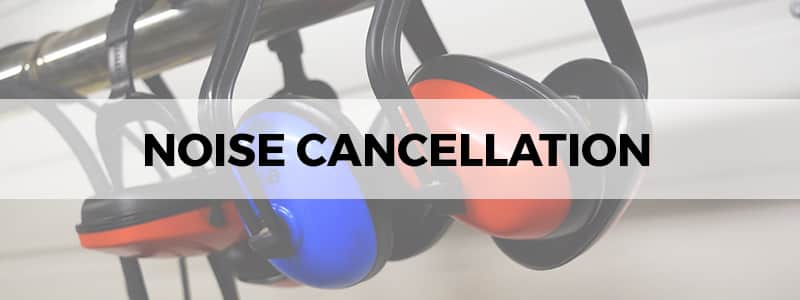
Some of the best wireless headphones out there also boast noise-canceling capabilities. Noise-canceling headphones have even given way to noise-canceling earbuds (the best of which allow for both comfort and portability), allowing for this powerful technology to be accessible at every level of casual music listening, gaming, professional use, and other possibilities that are being explored.
In this article, we’ll explain what noise cancellation is, the difference between active noise cancellation versus passive noise cancellation, and the difference between noise cancellation and noise isolation.
What Is Noise Cancellation?
Noise-cancellation technology allows for your audio source – your headphones or earbuds – to transmit sound in such a way that external noise is effectively canceled, providing an immersive experience without distraction.
A word of caution that’s important at this point is to mention the safe usage of noise-canceling audio equipment, not to be used where being oblivious from your surroundings could result in danger for you or anyone around you.
Having originally been put in use for airplane pilots, noise-canceling headphones and earphones allow you to block out constant sources of consistent noise, such as the din of traffic or the hum of a busy environment.
This is achieved by digital signal processing technology that works to “cancel out” and neutralize the exact signal that external noise emits. The internal mic and audio processor work together to receive the sound from your environment, process it as “noise” and cancel it out.
What Is Active Noise Cancellation?
Active Noise Cancellation is, essentially, the basic form of noise cancellation as described above. The noise-canceling effect is achieved by the circuitry present in the audio processor that, like a sonic eraser, actively emit a sound exactly 180 degrees out of phase with the noise picked up by the internal miniature microphone (also known as a “reference” mic).
Some more advanced ANC equipment has multiple microphones to better sample the noise, including a separate piece known as the error microphone that allows the circuit to adjust itself based on the error microphone’s sample of the final sound output.
What Is Passive Noise Cancellation?
Passive Noise Cancellation is, at least compared to ANC technology, a rather simple way of achieving a similarly pleasing effect. Passive Noise Cancellation is also referred to as noise isolation, mainly because these headphones “isolate” your sound output in such a way that physically disallows external sources of noises to seep through.
There’s no technical trickery involved here – often just viscoelastic foam in a large enough form, designed to be comfortable and snug in such a way that seals your ear canal. The idea is the same as earplugs.
Common examples of Passive Noise Cancellation are closed-back sealed headphones or earbuds with in-ear designs that, especially at lower volume levels, allow increased fidelity.
Of course, headphones offering Passive Noise Cancellation are far cheaper than proper Active Noise Cancellation equipment, which can well run into thousands of dollars a pop.
